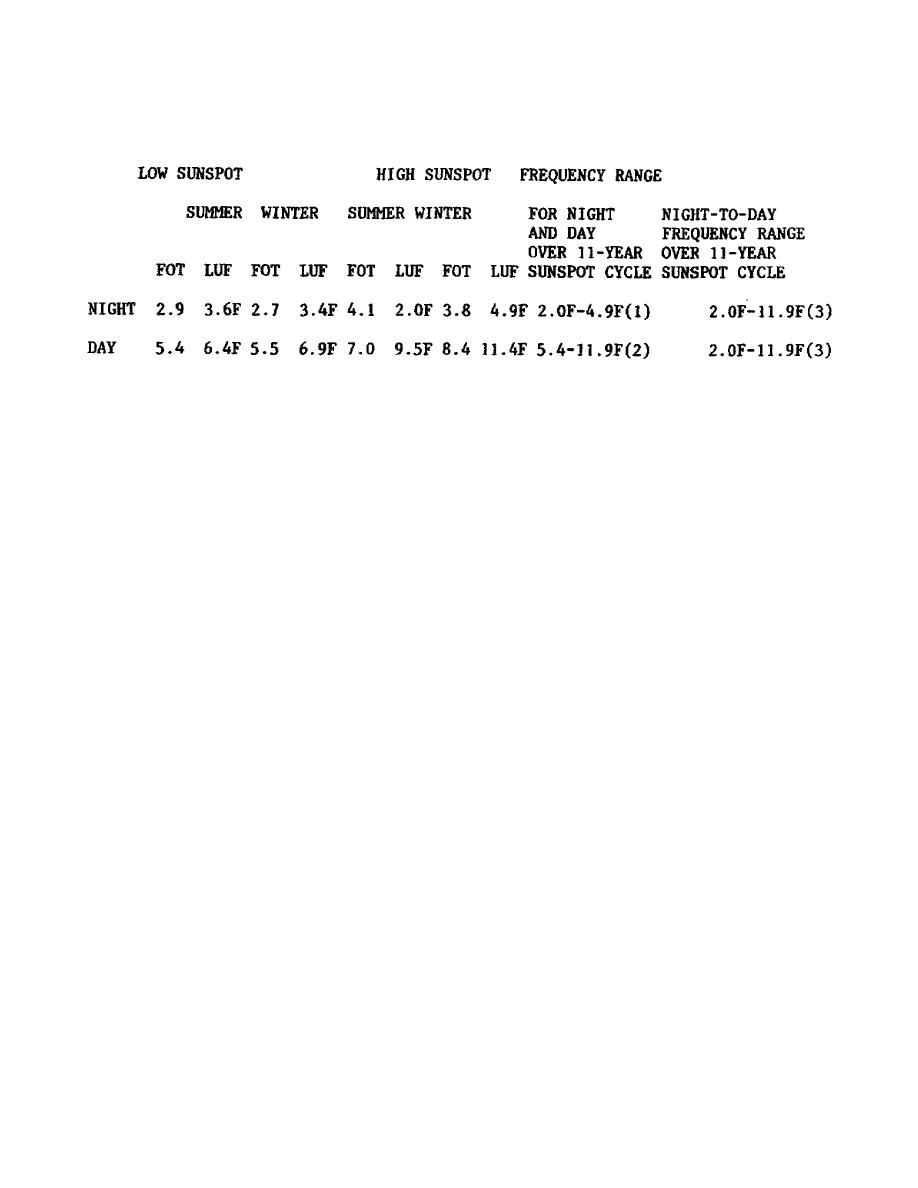
Comparisons of frequencies for day and night, high and low sunspots,
winter (Nov-Dec), and summer (Jul-Aug) in Europe for a distance of
100 miles. The letter F indicates 0-20 percent reliability.
Conclusions:
Frequency assignments should be the FOT, but hundreds
of nets require the same FOT, therefore assignments will be from the
FOT to the whip's LUF. The 15-foot whip's LUF is used because it's
the worst antenna to use. We are forced to use it at times (mobile
and mobile-at-a-halt).
The whip should be bent at a 450 angle to
make use of the sky wave. Frequencies on page 121 should be avoided,
or expect severe interference resulting in no communication. Submit
an interference report, and request another frequency.
Ionization
levels change from day to night, winter to summer, and from high to
low sunspots causing frequency assignments to vary over the 11-year
cycle.
(1) A nighttime low frequency would vary over 11 years from 2.0 to
4.9 MHz.
(2) A daytime high frequency would vary over 11 years from 5.4 to
11.9 MHz.
(3) To maintain day and night, 24-hour, 90% reliable communications
over an 11-year period you would need frequencies from 2.0 to 11.9
MHz.
For every 2 MHz increase in frequency, a frequency would be
needed.
EXAMPLE:
2.0 MHz
4.0 MHz
6.0 MHz
8.0 MHz
10.0 MHz
11.9 MHz
149



 Previous Page
Previous Page
